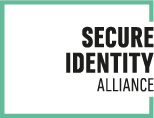SPECIFIC TERMS AND CONDITIONS OF USE OF eSAM and eSEC SERVICES
This page was last updated on 31st May 2022.
PREAMBLE
These Specific Terms and Conditions of Use (hereinafter referred to as "STCU") are intended to govern the use of the eSAM/eSEC services.
By accessing and/or using the eSAM/eSEC services, you expressly and fully accept these STCU, as well as all other legal documents pertaining to the use of the Website and the Services such as, for example, the General Terms and Conditions or the Privacy Policy. In case of disagreement between the STCU and the GTCU and more generally the other legal documents, the STCU shall prevail.
You are hereby informed that SIA, publisher of the Website, reserves the right to modify both the STCU and the legal documents at any time. Therefore, you acknowledge and agree that by using or simply accessing the eSAM/eSEC services after the last-modified date, you will be deemed to have accepted the STCU and the legal documents as modified.
1. PRESENTATION OF THE eSAM / eSEC SERVICES
The eDocument Security Awareness Model (eSAM) is designed to help governments with their secure document development program. It can be used as a self-assessment tool to evaluate an existing program. Or it can be used to evaluate the effect on security of certain choices in the program (try different scenarios). Anyway it can help to understand what is required to build a ‘security chain’.
The eSAM consists of three main processes:
- Application to Issuance
- Document design to Personalization
- Support processes
Each main process contains several steps. For each step, questions with multiple choice answers are defined.
Answers will result in a per step Security Awareness Score and a management report with recommendation on how to improve security in the program.
The Secure Awareness Model mainly deals with the security of your program or project, however security is not the only factor that must be taken into account. The best balance between Security, Cost and Convenience is different for every program. The Management Report gives you scores for these factors.
The eDocument Physical Security Evaluation Model (eSEC) is designed to help Governments with the design of their secure document development. It can be used as a self-assessment tool to evaluate an existing document. Or it can be used to evaluate the effect on security of certain choices in the program (try different evaluations). Anyway it can help to understand what is required to build a ‘secure document’.
This self-evaluation is done by:
- selecting the document type
- listing security features
- answering questions about the design process
eSEC has a database of:
- security features: strengths and threats countered
- document types: special requirements
Answers will result in a score and a management report per section with recommendation on how to improve security in the document design.
2. REGISTRATION AND ACCESS
To be able to access the eSAM/eSEC services and use the Services, you need to register and create an account.
The use of the eSAM/eSEC service is valid for an indefinite period of time. SIA reserves the right to terminate it with reasonable notice at any time by e-mail. Failure to comply with the obligations inherent to your responsibility agreed hereunder and in the GTCU may result in the immediate temporary or permanent suspension of your access to the eSAM/eSEC service, without notice, without prejudice to the other rights of SIA and without the possibility of complaint on your part.
3. INTELLECTUAL PROPERTY
All information that you submit within the eSAM/eSEC service remain your property.
4. YOUR RESPONSIBILITY AS USER
SIA may offer you the opportunity to submit, in the framework of the eSAM/eSEC services, information in order to evaluate an existing program or document or to evaluate the effect on security of certain choices in the program (try different scenarios/ evaluations).
Furthermore, you agree to be solely responsible for their content and legality, and hereby release SIA of any liability for damages that third parties may claim in this respect.
The relevance of the scores resulting from the eSAM/eSEC services depends on the seriousness of the information provided by the eSAM/eSEC user.
However, in any case, SIA cannot be liable for any damages resulting from the evaluation made within the eSAM/eSEC services.
5. CONFIDENTIALITY
SIA acknowledges that it will have access to information which is confidential, (Hereinafter referred to as “Confidential Information”). Confidential Information includes trade secret, trademarks including the Trademarks and other intellectual or industrial property rights, technical knowledge, designs, drawings, data, materials, technology, business practices or policies, products, their specifications, information relating to research and development, the terms of the present Agreement and any other technical, commercial and/or financial information communicated by you to SIA in the course of the use of eSAM/eSEC services; whether in tangible and intangible form.
Moreover, except as set forth in this Article, Confidential Information shall not be disclosed by SIA and its employees except for the need of the performance of eSAM/eSEC services. Accordingly, SIA shall not disclose such Confidential Information to any third party or use such Information at any time or any manner other than in connection with the performance of ESAM/eSEC services as set herein. However, it is understood between the Parties that Confidential Information may be disclosed to governmental or authority or regulatory body to such extent as is necessary for the purpose contemplated by this Agreement, or as is required by law and subject in each case to use its best endeavors to ensure that the person in question keeps the same confidential and does not use the same except for the purposes for which the disclosure is made.
SIA shall take all appropriate measures in order to ensure the confidentiality of the Confidential Information, and to keep it in its possession and under its supervision. In this respect, you shall endeavor to keep to a minimum the number of persons having access to the Confidential Information (and copies of the Confidential Information); being understood that these persons will be limited to those who (i) have a need to know in order to perform the present agreement (ii) have been advised of the Confidential Information's confidential status, and (iii) are subject to legally binding obligations of confidentiality as to such information no less restrictive than those contained in this agreement.
You equally undertake to keep confidential your login and password secret from third parties.
The obligations set out in this Article shall not apply to Confidential Information which:
- is already in the possession of or is previously known to SIA at the time of its receipt from you other than by breach of this agreement;
- is independently developed or generated by SIA without use or knowledge of the Confidential Information received from you as shown by the written records of both Parties;
- is in or comes into the public domain otherwise than by breach of this agreement; or is lawfully obtained from a third party who is free to disclose the same.
SIA undertakes and agrees to bind its officers, directors and employees with respect to the confidentiality.
Upon termination of this agreement, SIA agrees to delete promptly, upon written request, all Confidential information.
These confidentiality obligations shall start upon mutual execution of the present agreement and shall remain in full force and effect during Five (5) years after its expiry or termination.

